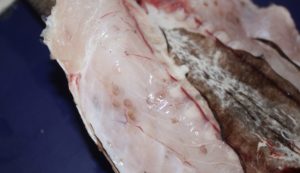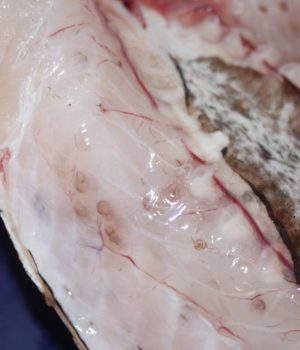During the summer consumption of fish and shellfish grows. For this reason, with poor conservation and use of these foods, the anisakis. In this article we will tell you all the details and we will give some guidelines on how to avoid it.
The appearance of the anisakis
During the summer months and the heat that these bring, we feel like eating fish. It is possible that this trend causes us to keep it in unsuitable conditions. The anisakis It is a worm-shaped parasite, about three centimeters long and one millimeter thick. These larvae are found embedded in the abdominal cavity of the fish.
The species most parasitized by this worm are hake and bonito. Even so, we can find it in other fish such as monkfish or mackerel, among others. According to the Spanish Federation of the Digestive System (FEAD), the fish that we eat less cooked, such as marinated anchovies or canned sardines, are Who can harm us the most?.

What to do to avoid contracting this parasite
The symptoms that must be taken into account to know if we have been infected are varied. The main ones are severe abdominal pain, signs of intestinal obstruction and vomiting. Other less common are occurrence of allergic reactions, which manifest with mild hives. Ultimately it can cause an anaphylactic reaction.
To face the anisakis, you have to follow a few guidelines before consuming food. The main one is to eviscerate the product, that is, clean it and remove the viscera. You will remove most of the parasite, but not all of it. The enemy of this worm is temperature. Cooking the fish, either at a low or high temperature, will get rid of the problem.
And if you want enjoy a good sushi, the frozen is essential. The easiest way is to keep the fish below -20ºC for two days. And if your freezer is conventional, it is recommended extend this freezing period up to six days. Now that you know, will you be more careful when consuming fish and shellfish?







